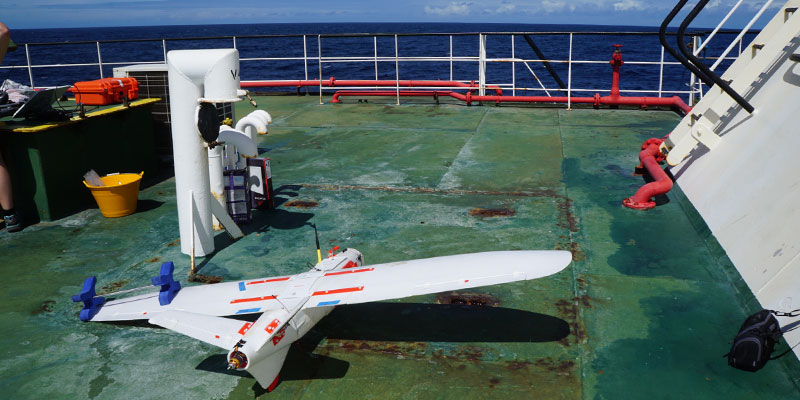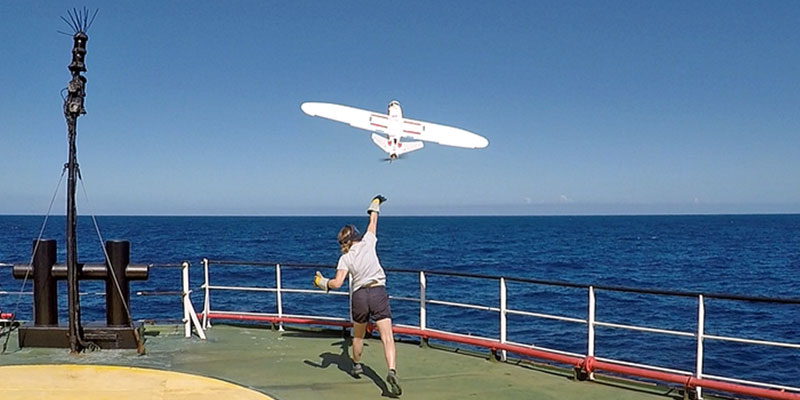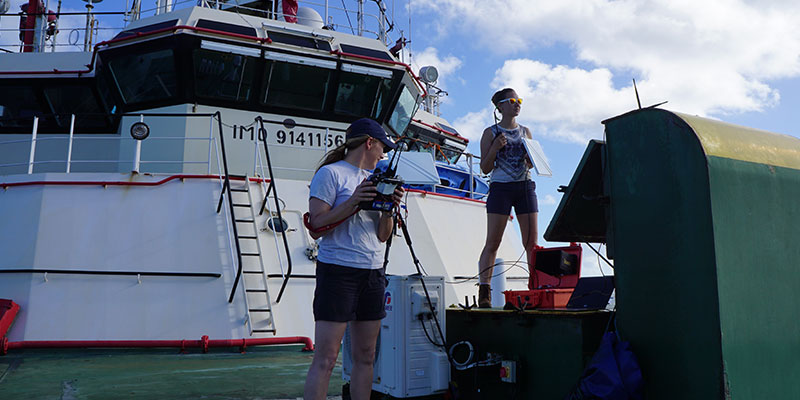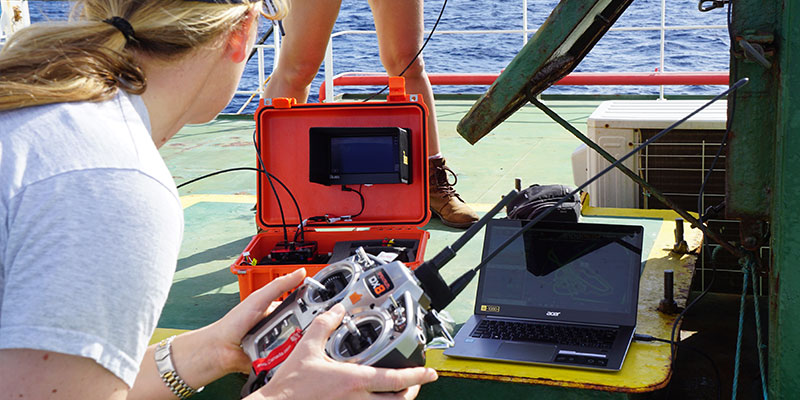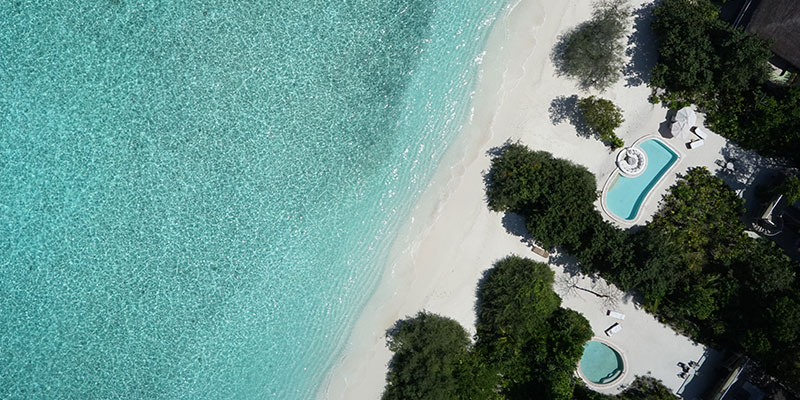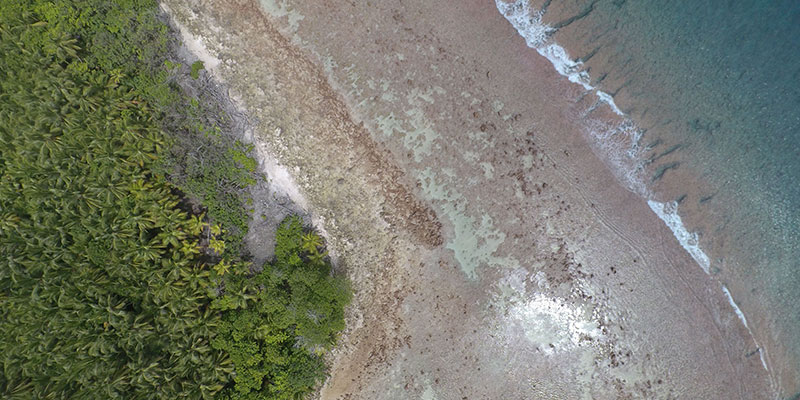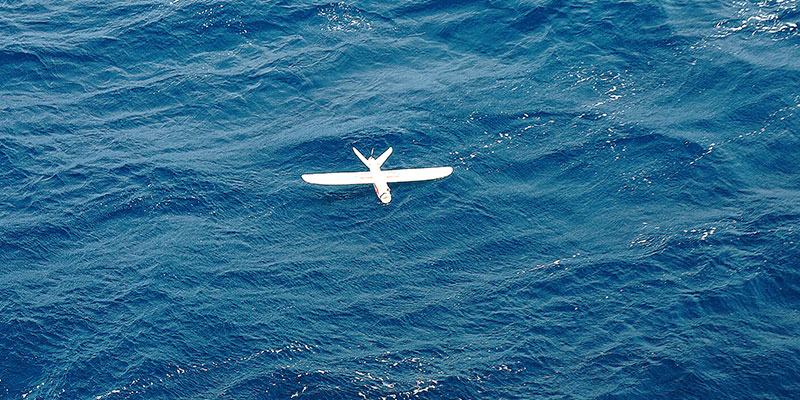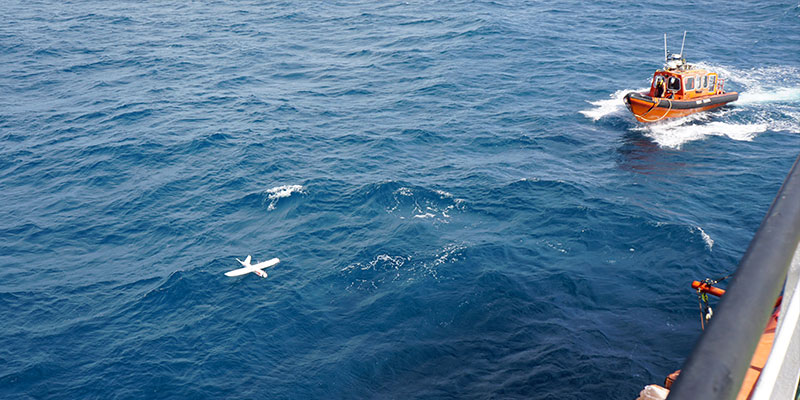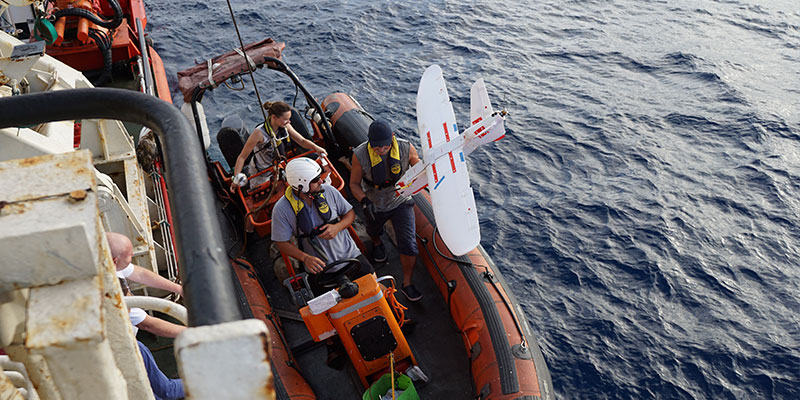Two Amphibious Aeromapper Talon small UAVs were used in the British Indian Ocean Territories (BIOT) as part of a scientific expedition led by the Zoological Society of London.
Aeromapper Talon Amphibious Watches Over British Indian Ocean Territory
Description
This is the first time that a fixed-wing amphibious UAV has been used in the UK Overseas Territories for marine ecological surveys, fisheries management and maritime surveillance. The units were launched from the British patrol vessel of the BIOT around islands as well as for open-ocean exercises, autonomously landing every time on the ocean.
The BIOT territories have an exclusive economic zone which extends 200 nautical miles from the coast, and the British government have placed one ship, it’s crew and one fisheries officer, to patrol the entire 640,000km2. This entire zone was also declared a marine protected area in 2010, meaning that no fishing is allowed there. In BIOT, the patrol vessel is responsible for intercepting vessels which are fishing illegally in BIOT waters and has the power to start prosecution procedures, but only, if enough evidence is gathered against the perpetrators. Evidence comes in the form of fish on board caught in BIOT, evidence of banned fishing gear (metal lines and hooks specifically for catching shark) and the holy grail, a photo of the vessel, with its ID number clearly shown, with its gear in the water. To gather this photographic evidence is one of the main objectives for the amphibious Aeromapper Talon UAV.
Although the weather hindered image collection the drone was still able to get some promising preliminary results. More than 25,000 images and hours of video was acquired during the exercises. The UAV had proven a useful tool in image collection on a large and rapid scale, far outdoing the image volume that a quadcopter could gather (range was tested to 13 km but is capable of up to 30km).
The project has gained a lot of traction, interest and support, with the next expedition being to Belize, where the latest amphibious drone version, complete with 20MP camera and higher resolution live-link system, will be tested at the Turneffe Atoll marine protected area, an area which, like BIOT, contains small and scattered islands in a coral sea. Local rangers will be trained to use the UAV, meaning that precious and expensive boat fuel can be saved and channeled into other resources, expanding the capacity of governance, of the protection team; it is this that will fundamentally aid in the areas marine conservation and may increase the number of illegal fishing prosecutions with photographic evidence. Just the knowledge that the enforcement team has a spying UAV, may deter fishers from entering the area.
Summary
CLIENT: Zoological Society of London
LOCATION: British Indian Ocean Territories
UAV: Aeromapper Talon
